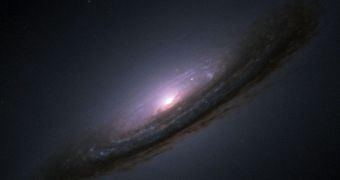A group of investigators using the Chandra X-ray Observatory recently managed to get more insight into the factors that cause the appearance of type Ia supernovae. These are some of the most powerful blasts in the entire Universe, but their origins have never been clearly established.
The team found traces of stellar material around an object called Tycho’s supernova remnant, This implies that the star which exploded had a companion, which at some point released this material.
This object was first identified by the Danish astronomer Tycho Brahe in 1572, due to its extreme luminosity in the night sky. What experts discovered inside the structure today were an “arc” and a “shadow” inside the remnant itself.
Usual supernova events occur when a massive star reaches the end of its burning cycle. As this happens, it exhausts all of its hydrogen fuel supplies, and finally loses its ability to sustain nuclear fusion all by itself.
Without this explosive force, the object's own gravitational pull causes the star to implode, while shedding the outer layers of its atmosphere at the same time. A supernova is this remarkably strong explosion, whose intensity can briefly outshine entire galaxies as seen from Earth.
But a Type Ia supernova is different. It occurs on white dwarf stars, which are the finally remnants of Sun-sized stars that slowly exhaust their hydrogen supplies. White dwarfs burn helium exclusively, and are about the size of Earth. However, they are still as heavy as the Sun.
From time to time, they can produce tremendous thermonuclear explosions on their surface, and this is what astrophysicists call a Type Ia supernova. What causes these events is still a mystery to science.
However, there are two scenarios that experts favor. One of them says that the events occur when two white dwarfs collide and merge, whereas the other states that the blasts are triggered as one white dwarfs continuously accretes mass from a companion star in a binary system.
If the former were true, then astronomers say that telescopes should be unable to find any trace of excess material. But Chandra did see such traces, and so the new findings would appear to support the latter theory.
Still, experts believe that both scenarios could be valid, but in specific sets of circumstances. In the new study, it was revealed, for example, that companion stars in such systems can be tremendously resilient.
“It looks like this companion star was right next to an extremely powerful explosion and it survived relatively unscathed,” explains scientist Q. Daniel Wang, talking about the source of the material he and his colleagues identified around Tycho's supernova remnant.
“Presumably it was also given a kick when the explosion occurred. Together with the orbital velocity, this kick makes the companion now travel rapidly across space,” the investigator goes on to say.
Wang holds an appointment at the University of Massachusetts in Amherst, where he is a member of the research team that conducted the study. Details of the new work will appear in a paper scheduled for publication in the May 1 issue of The Astrophysical Journal, Universe Today reports.

 14 DAY TRIAL //
14 DAY TRIAL //